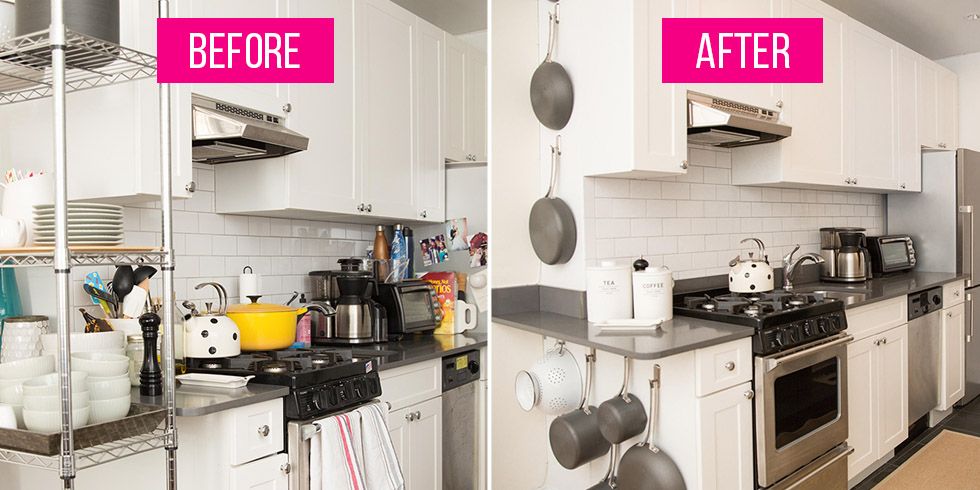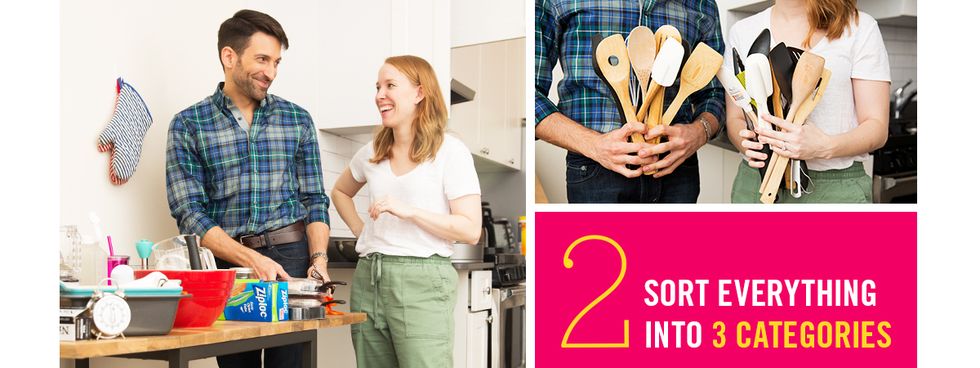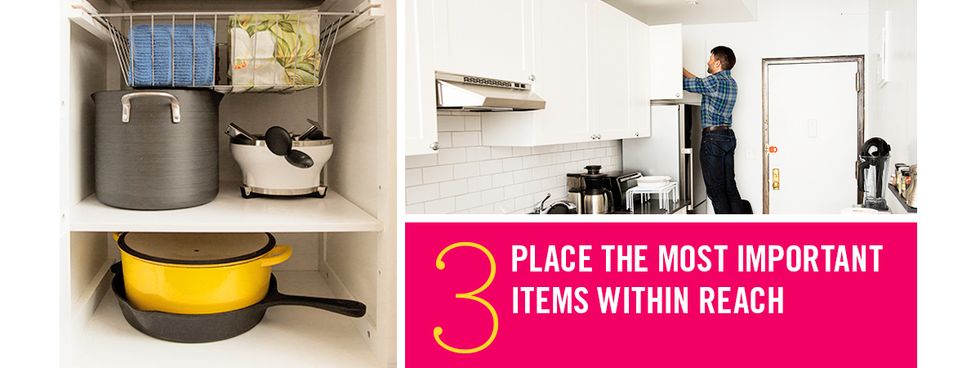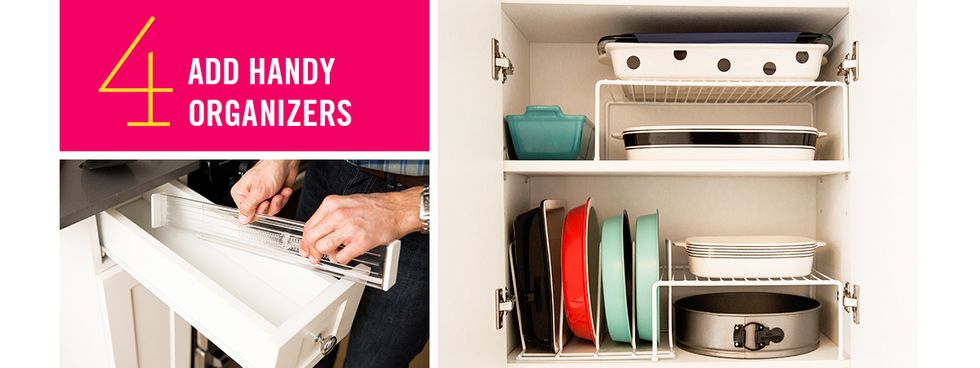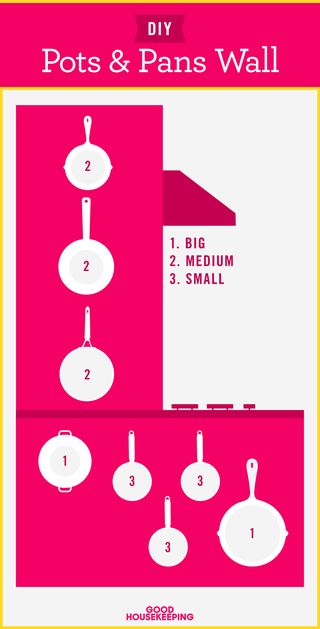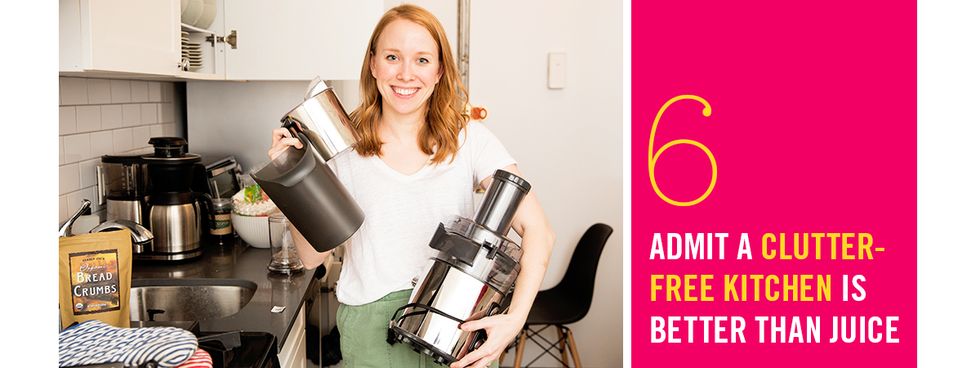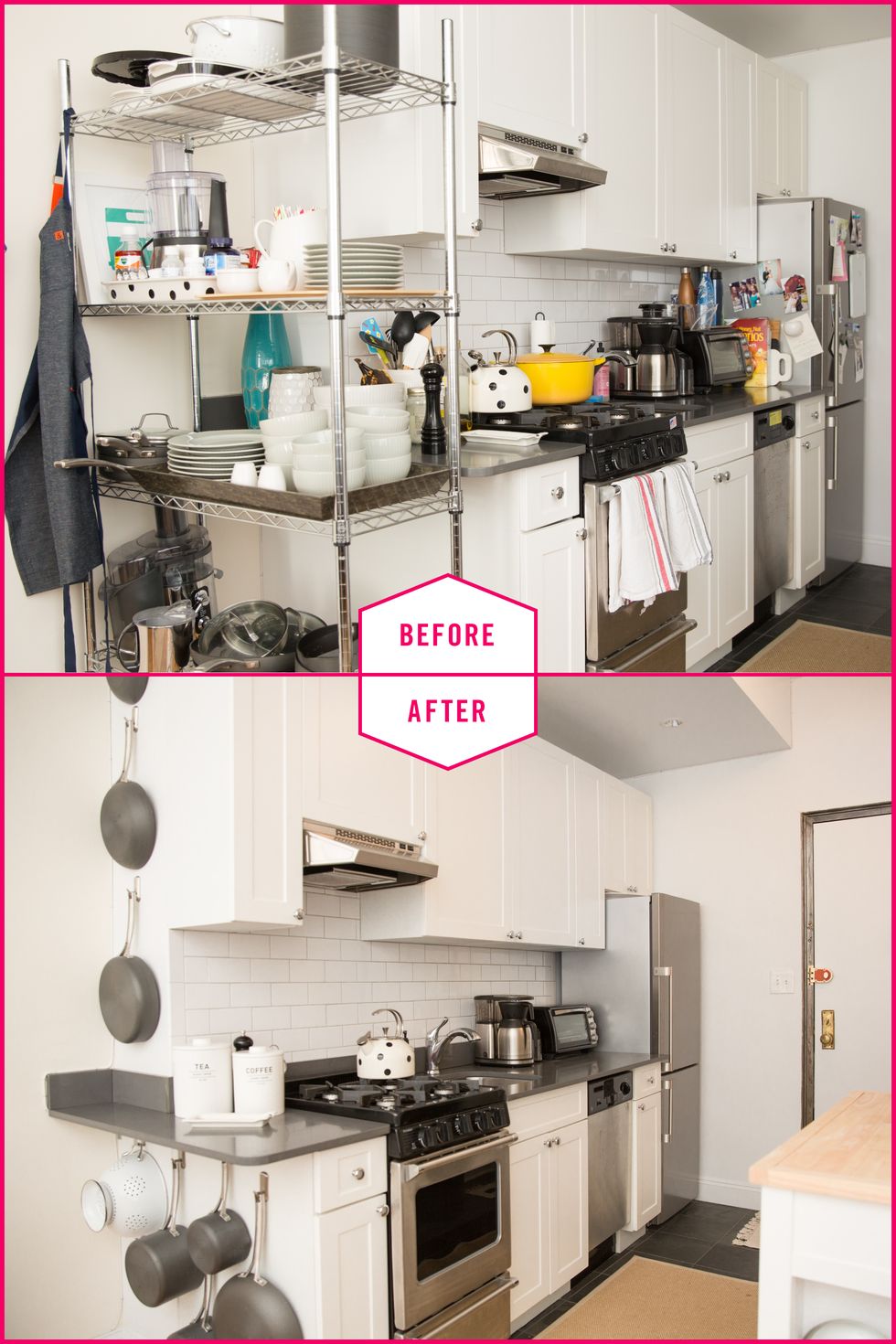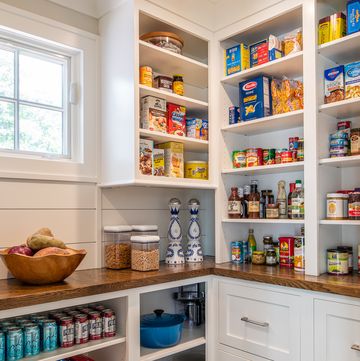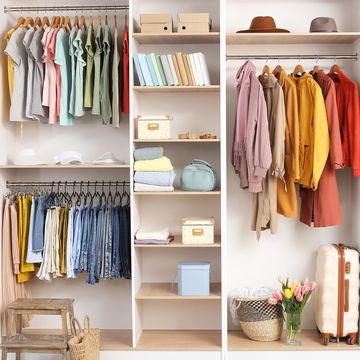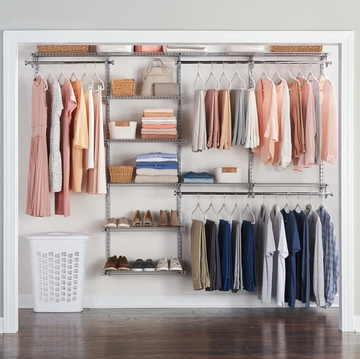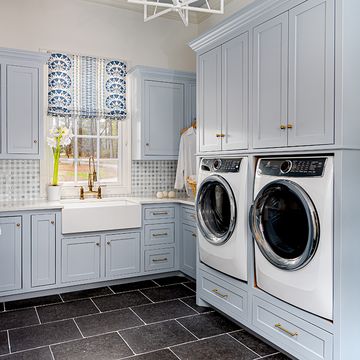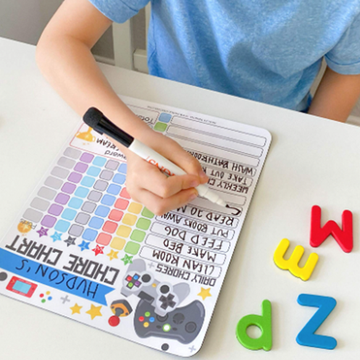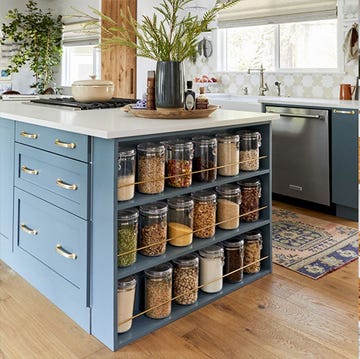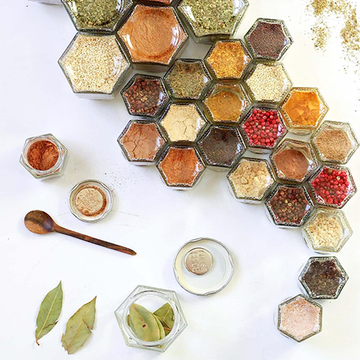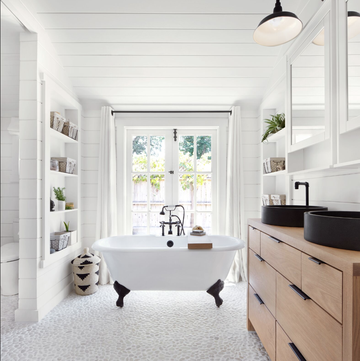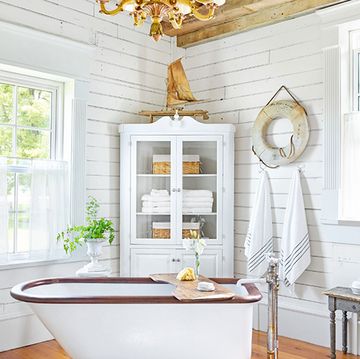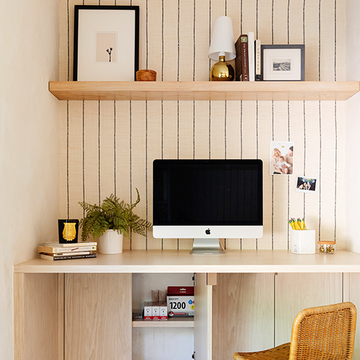Anyone who lives in New York City knows the first thing people ask about when they learn where you're from is "How big is your apartment?"
"A little less than 500 square feet," I always reply.
Then they'll ask: "How do you do it?" and I'll rattle off some answer about how you can't hold onto everything, and it really makes you appreciate what you do have. But the truth is, it's hard.
This past year I reached an all-time small apartment low when I moved from Queens to Manhattan's Upper West Side. While I was ecstatic about my new neighborhood, located just five minutes from Central Park, space wise it was about one-third of the square footage I had before. On top of this, I quickly realized I'd put zero thought into where my soon-to-be husband and I were going to put all of our wedding gifts in our now already-overstuffed apartment.
Yes, I'm a home editor by trade and spend all day every day telling people how to incorporate organization strategies into their space, but my best attempts after the move and our wedding just weren't cutting it. I knew I needed help, which is why I reached out to Jeffrey Phillip, a Good Housekeeping columnist who has also shared his pro tricks with Good Morning America and The Dr. Oz Show along with countless private clients.
Jeffrey was the first person I let peek inside my messiest, most shameful kitchen spots. During the initial consultation, it was as if I was seeing my clutter for the first time. As we went cabinet-by-cabinet and drawer-by-drawer, I found myself making excuses left and right.
"I know it's bad, but you should have seen it before my latest Goodwill haul," I told him — repeatedly.
Luckily, Jeffrey said he knew just the tricks to transform my space. And now, post kitchen cleanse, I'm sharing them with you. It all boils down to five basic steps:
Instead of focusing on the mess that will follow, view this first critical step as turning your kitchen into a clean slate. You must do this if you want to make unbiased storage choices. Otherwise, you might convince yourself to avoid swapping your utensil drawer for your napkins basket because (oh my gosh!) where would the forks, knives and spoons go then?! As Jeffrey puts it: "An empty kitchen gives you the ultimate creative freedom."
Pulling everything out at once also allows you to see everything that's there and not miss a thing. "You'd be surprised how often I find similar items on totally different sides of the kitchen, like a set of salad tongs in the utensil drawer and another one hiding on an upper cabinet shelf," Jeffrey said. Personally, I had food in three different spots in my kitchen, which he pointed out to me right away.
As you take items off shelves, sort them into broad categories on or around a table. For me, that meant all of the glassware went on the kitchen table, baking dishes and sheets went under the table, accessories like whisks and napkins went in the middle of the room, and food went on the coffee table. By the end of this exercise, my kitchen was cleaner than before I moved in, but my living room looked like it had just thrown up our entire wedding registry.
The categories include keep, toss and donate.
"The sorting step helps me identify duplicates and broken items first," Jeffrey said.
We tossed my chipped bowls and expired food. Duplicates and any unwanted items in good condition were thrown into the donation boxes. And then we assessed what really gets used verses what were just "nice to have" or "what if I need it later" items.
Some of these decisions were easy, like saying goodbye to more than half of my 30-plus drinking glasses. But others were hard. Even though I only use my juicer once, maybe twice, every year, I defended it to the death. You'd think my apartment was The Hunger Games with the drama I was spewing at Jeffrey over this juicer.
"Any specific appliance is totally fine to hold on to — if you use it," he told me. "I find people have a fantasy of using the item, but usually don't want to deal with the actual process of using it or the clean up."
I knew it was Jeffrey's job to push me beyond my comfort zone, which is why I ended up donating three and a half boxes worth of cooking utensils and mismatched mugs, but no juicer — yet.
After discussing every last item in my kitchen, the fun began — literally, at least for Jeffrey. He started with the space above my fridge, since it was the area he was most excited about. This is one of his favorite tricks: "Getting one area settled that you are looking forward to working on helps create a positive forward momentum for the rest of the project."
This space was also important from a functionality standpoint. Since I don't use my cake stand or baking dishes often, he put them high above my fridge. Next, Jeffrey picked out the cabinet for my dishes and the nearby drawer for my utensils, which he put across from each other since they're usually used as a pair. Finally, my heaviest items, like my cast iron skillet and mixing bowls, went in my lowest cabinets.
For some of us, walking into The Container Store is like being a kid in a candy store. If you're shaking your head furiously in agreement, consider me Willy Wonka. Jeffrey brought basically the entire store to my apartment. He says he always brings more than enough so he doesn't get stuck without something he needs at a client's home — then he returns the rest afterwards.
The first genius product he pulled out was drawer liners. This textured material went on the bottom of all of my drawers to prevent items from sliding. He then put dividers in my utensil drawers and added risers in my dish cabinets to create twice as much storage space for my plates and bowls (seriously, who knew?).
But my favorite element in the entire kitchen was Jeffrey's genius pot and pans wall he hung on the previously-wasted wall space next to my cabinets with the help of Command Hooks. Now, these clunky items are easier to grab when I'm making dinner and I can hide less appealing items (like my storage containers) in the cabinets my pots would otherwise occupy.
Unfortunately, there aren't any hard and fast rules for everything that is left after you solve for the essentials. But Jeffrey wasn't intimidated by spaces like my storage container cabinet: He just added a riser, stacked round shapes on top and square ones on bottom, then used a sliding container for lids. Voilà!
But not everything fit together so perfectly. Case in point: The appliance cabinet. Jeffrey decided on a narrow space next to my fridge for my hand mixer, food processor and such. The only problem? My juicer didn't fit. (After mentioning it again, do you realize yet how committed I was to this juicer?)
But after plenty of back and forth, I learned my most valuable lesson of the day: You can only keep what you have space for. It seems so simple, right? But it took seeing Jeffrey struggling to fit this appliance into my cabinet for me to finally admit I couldn't, or more accurately, shouldn't, keep my juicer. It had to go.
"Working on a project like this can bring up a lot of feelings of anxiety and guilt and working through that is no easy feat," Jeffrey reassured me. "But once those feelings settle and are understood, there is a much lighter, positive and rewarding feeling on the other side — along with a space that is easier to use, take care of and simply live in."
Okay, I admit it. If there's one thing I don't miss after this experience, it's the stress of my former kitchen. Even when things were "put away," I felt like I was crumbling under my belongings. Now, when I go to unload my dishwasher, the process doesn't bring me anxiety. Instead, I feel like I'm solving the easiest, most-satisfying puzzle ever — one that I never lose.
And when I get a craving for something green and healthy in juice form, all I have to do is stop by the bodega below my building, which, like my small and expensive apartment, is another thing I've grown accustomed to in New York City.
Want to see results? Here's the before-and-after (not a juicer in sight!):

Lauren is a senior editor at Hearst. She was previously the senior editor at WomansDay.com and the home editor at GoodHousekeeping.com and HouseBeautiful.com. Her book club, ramen, and jean jackets are a few of her favorite things.
